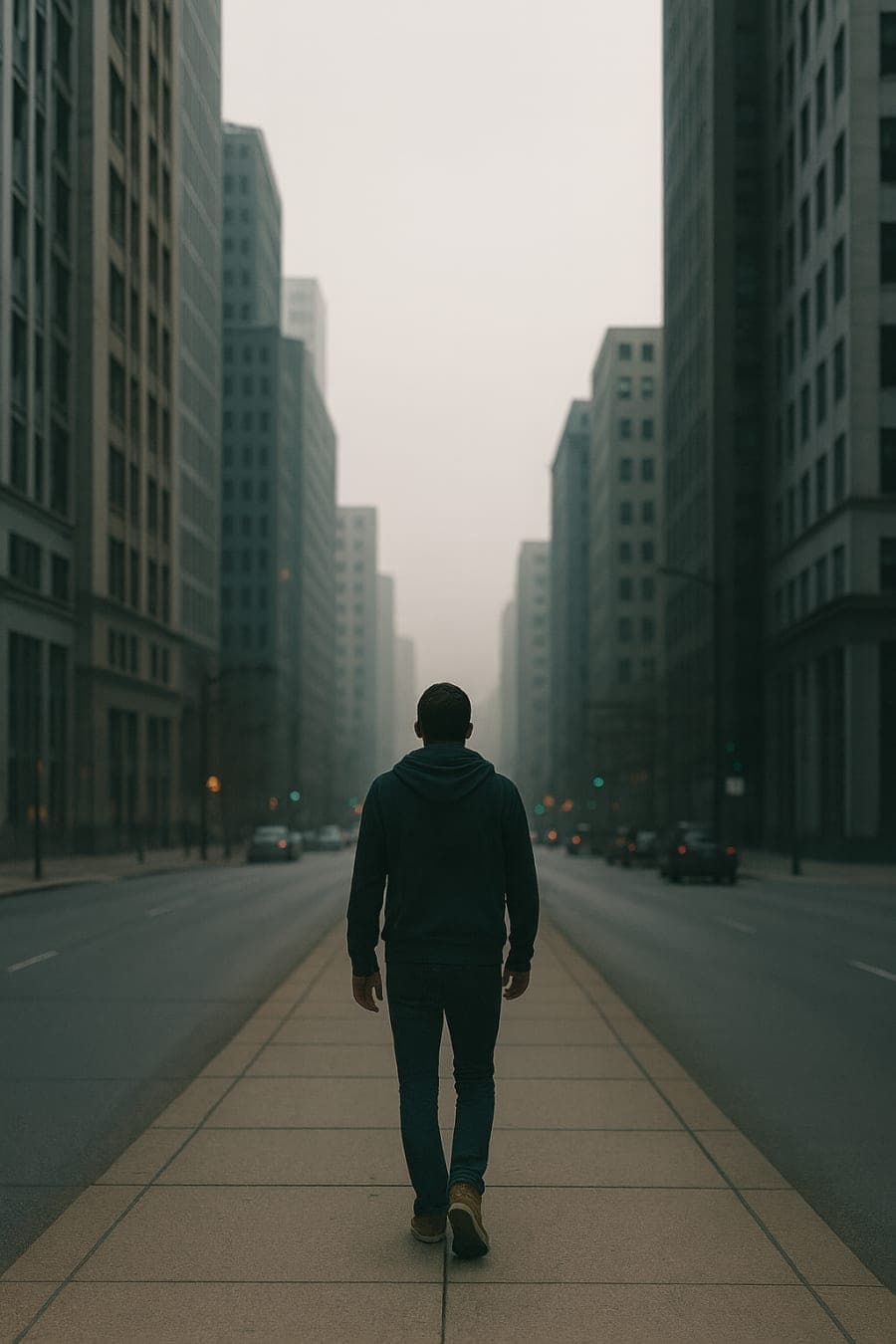The Illusion of Connection
Cities promise connection — millions of people sharing the same streets, the same light, the same rhythm. Yet inside this closeness, many of us feel more alone than ever.
Urban life rewards independence and speed. We move fast, work hard, and fill our calendars, but often at the cost of presence. In smaller communities of the past, connection was woven into everyday life — a shared meal, a familiar greeting, a rhythm of belonging.
In modern cities, proximity replaces intimacy. We are surrounded by faces, yet untouched by presence.
When the Ground Disappears
In the city, we walk on concrete, not earth.
We touch glass more often than skin.
The sky becomes something between buildings, not above us.
Concrete doesn’t just separate us from nature — it separates us from ourselves.
When our feet forget the feeling of ground, our hearts forget what it means to be grounded.
This disconnection is subtle, but profound. We stop noticing the wind. We forget the smell of rain on soil. The hum of traffic replaces the rhythm of breath. And slowly, loneliness seeps in — not only as the absence of people, but as the absence of belonging.
The Ache Beneath the Noise
Urban loneliness often hides beneath busyness. We fill the silence with movement — work, messages, and endless notifications — afraid to stop, because stillness might reveal the emptiness we’ve buried.
But mindfulness invites us to pause.
It teaches us to stand still long enough to hear what’s really missing: not more activity, but more aliveness.
Even in the middle of a city, we can begin to feel the earth again — under the noise, under the pace, still alive, still calling.
The Longing for Wholeness
There are moments when art reveals what our daily lives forget. When Avatar first appeared, it moved millions not just for its story, but for what it reminded us of — a deeper way of belonging.
The Na’vi live in rhythm with their world. The trees breathe with them. Every creature is part of a single pulse. Through them, we glimpse a harmony that modern life often silences.
When audiences wept, it wasn’t only for the characters — it was for memory. We recognized a world we once knew, even if we’ve never lived in it. A world where everything is alive, and nothing is separate.
That longing — to feel part of something greater — lives quietly inside us all.
The Forgotten Earth
Our disconnection from each other mirrors our disconnection from the world that sustains us. Cities often grow by covering over what was once alive — rivers turned to roads, soil buried under concrete, air thickened by what we call progress.
Pollution, noise, and light are not just environmental issues — they are signs of a deeper forgetfulness. When we lose respect for the earth, we lose respect for the quiet places within ourselves.
Yet mindfulness can begin to heal this, too. It teaches us to notice — to walk more slowly, to breathe consciously, to remember that every inhale is a gift from the trees we’ve forgotten to see.
The path to reconnection doesn’t begin with grand solutions, but with presence. Even a single mindful breath is a way of saying: I belong here.
(More reflections on this will be explored in my upcoming book, Mindfulness for Loneliness.)
📖 From Mindfulness for Loneliness
Loneliness in cities isn’t about the lack of people — it’s the absence of presence.
We see faces, not souls. We move, but rarely arrive.
Mindfulness is the art of returning — to this breath, this street, this life.
This passage reminds us that loneliness is not simply about being alone — it’s about being disconnected from the present moment.
We can walk through a city full of people and still feel invisible if our attention is scattered.
Mindfulness invites us to arrive fully where we are, transforming any place — even a crowded street — into a space of belonging.
🏡 Returning Home
Urban loneliness is not a personal failure — it is the collective ache of a world that has forgotten its roots.
But healing begins in small ways.
By noticing a tree growing through a crack in the sidewalk.
By feeling the breath rise and fall in your chest.
By remembering that even here — surrounded by glass, noise, and light — the earth is still beneath you.
It’s waiting, quietly, for you to come home.
🌿 Stay Connected
If these reflections resonate with you, I’d love to stay in touch:
- ✉️ Subscribe for updates — receive new writings and news about Mindfulness for Loneliness as they unfold.
- 💌 Share your reflections — hearing your stories is part of why I began this journey.
Even in the heart of the city, silence can become a shore — a place to stand, to breathe, and to begin again.
